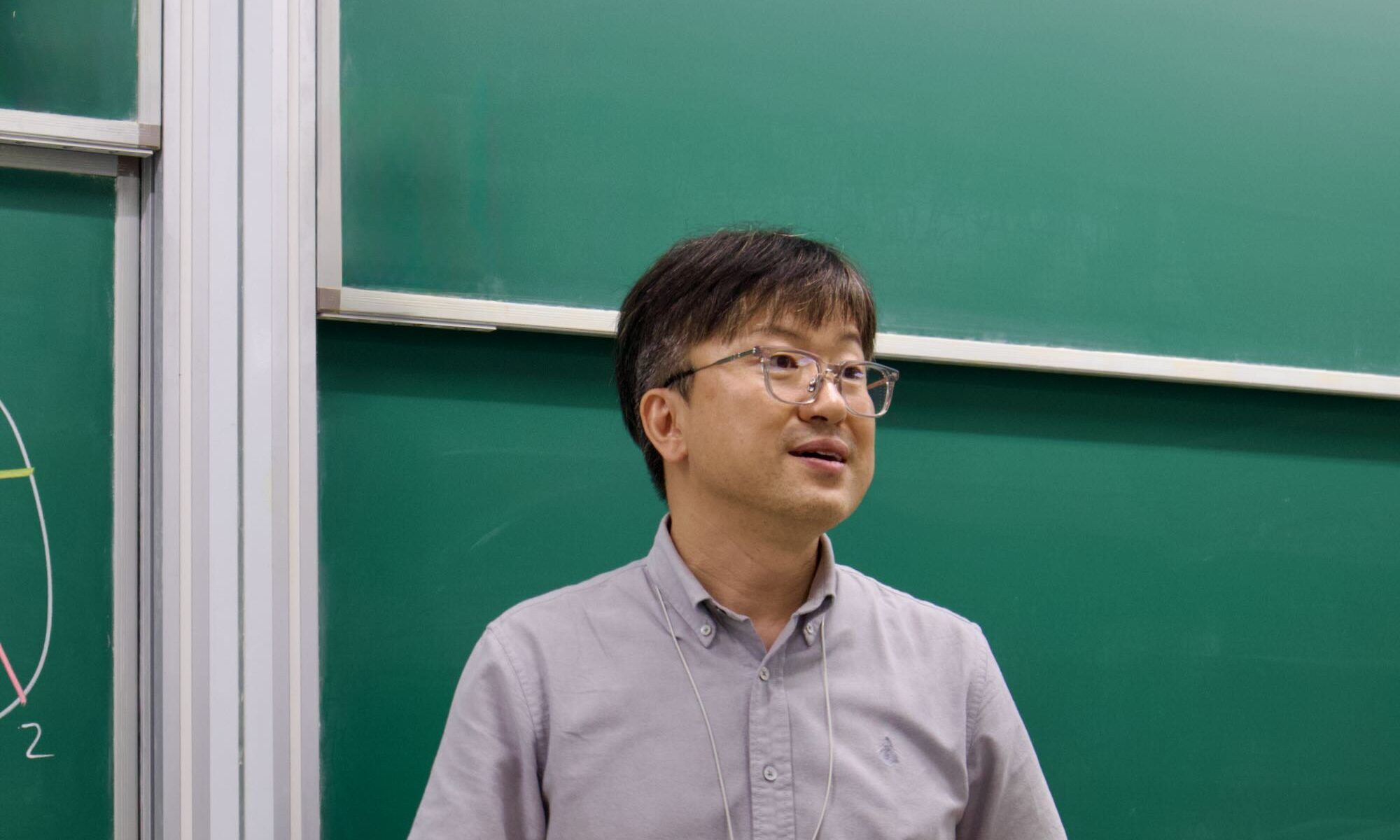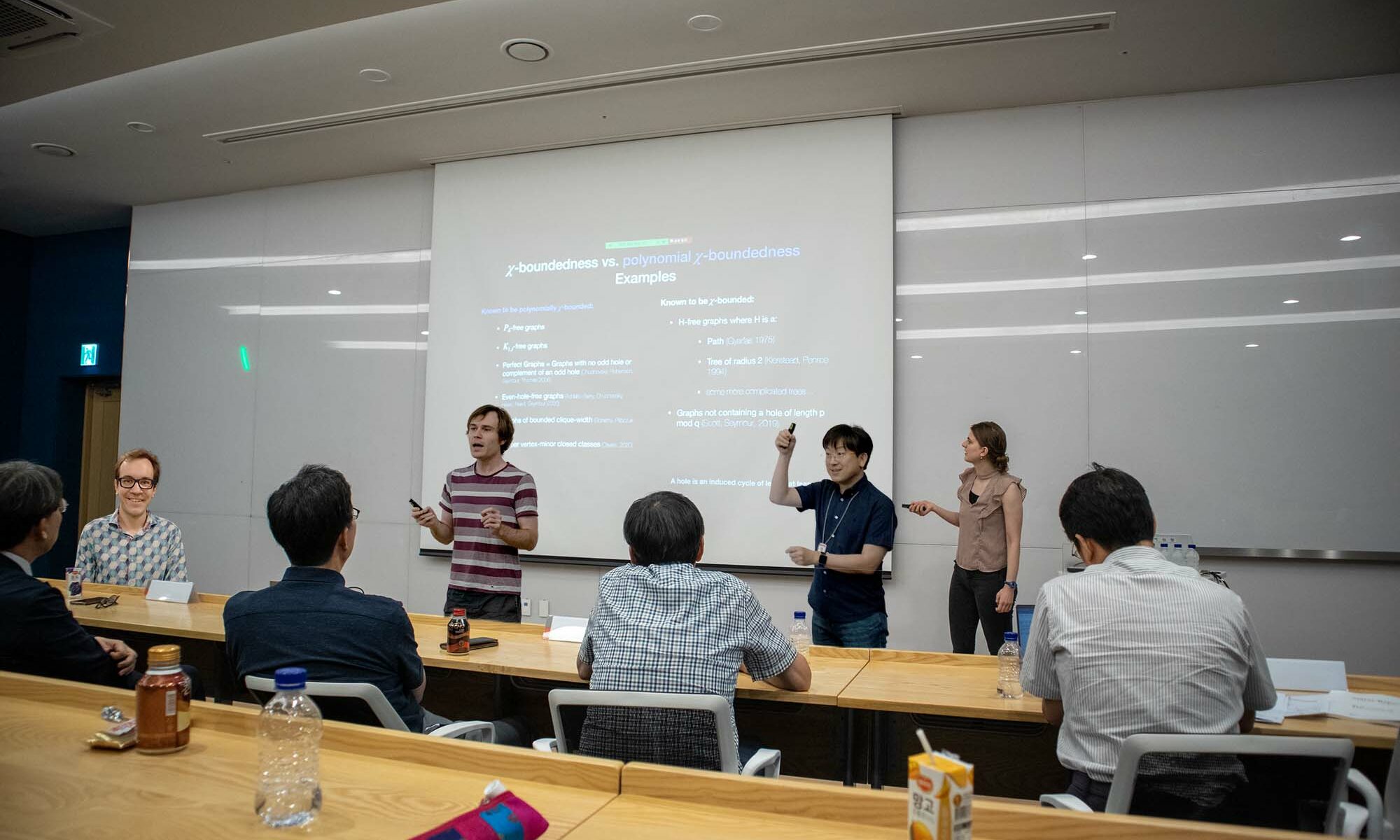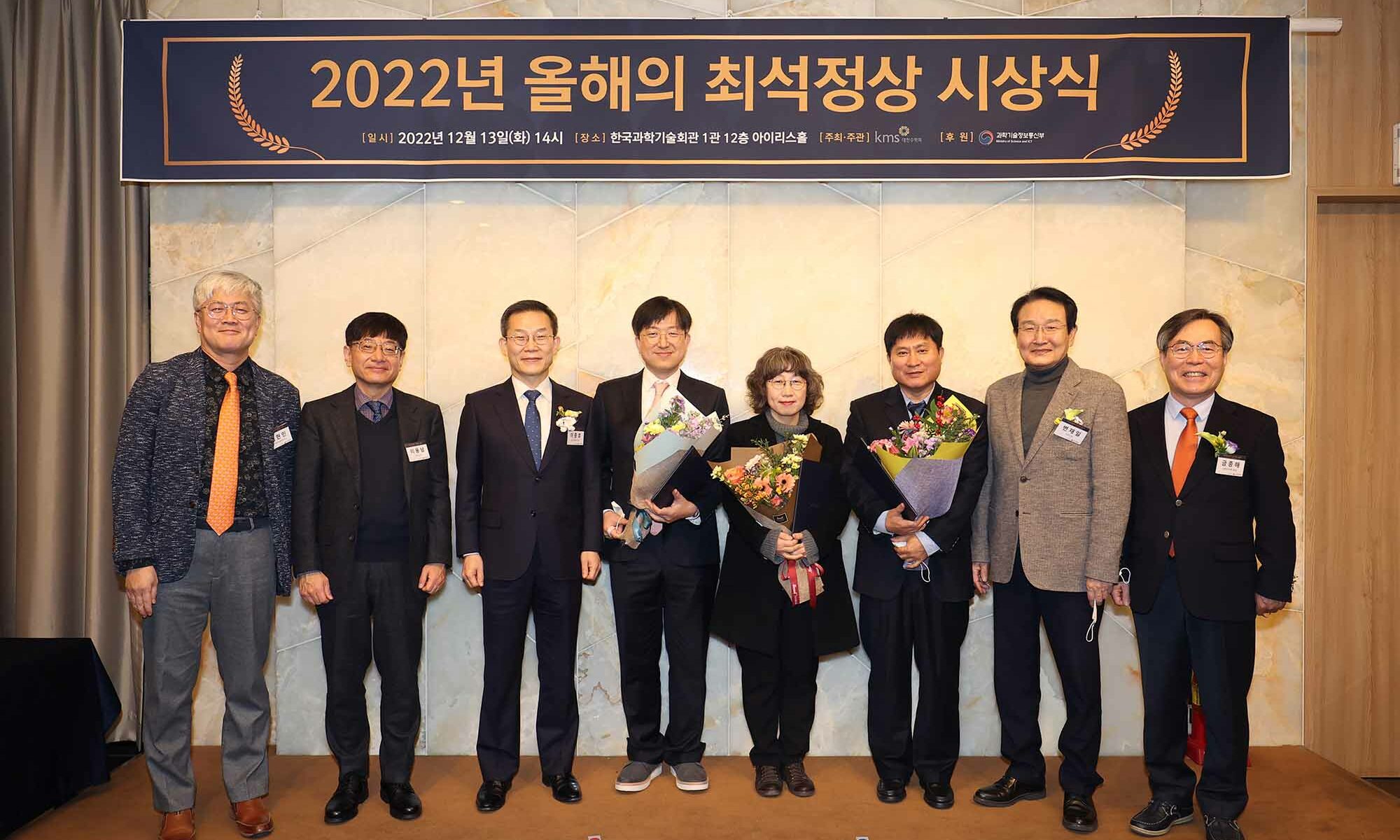On August 29, 2025, Sang-il Oum (엄상일) from the IBS Discrete Mathematics Group gave a talk at the Discrete Math Seminar on the Erdős-Pósa property for vertex-minors and perturbations of graphs. The title of his talk was “The Erdős-Pósa property for circle graphs as vertex-minors“.
Sang-il Oum (엄상일), The Erdős-Pósa property for circle graphs as vertex-minors
Open Symposium at the Discrete Mathematics Group
On July 13, 2023, the Open Symposium at the Discrete Mathematics Group was held. There were four talks by the members of the Discrete Mathematics Group.
| 9:40-10:05 | Obstructions for dense analogs of tree-depth | Sang-il OUM |
| 10:05-10:20 | Structural and extremal results for twin-width | Kevin HENDREY |
| 10:20-10:35 | Down-sets in combinatorial posets | Rutger CAMPBELL |
| 10:35-10:50 | Reuniting 𝜒-boundedness with polynomial 𝜒-boundedness | Linda COOK |
Sang-il Oum received the Choi Seok-Jeong Award of the year
On December 13, 2022, Sang-il Oum of the IBS Discrete Mathematics Group received the Choi Seok-Jeong Award of the year (올해의 최석정상) from the Minister of Science and ICT of Korea. This is the 2nd year of this award named after Choi, Seok-jeong, known for discovering a pair orthogonal Latin squares of order 9 for the first time ahead of Euler.
Sang-il Oum (엄상일) gave a talk at the Discrete Math Seminar on an explicit upper bound of the size of each obstruction for graphs of linear rank-width at most k and matroids of path-width at most k
On February 28, 2022, Sang-il Oum from IBS Discrete Mathematics Group and KAIST gave a talk at the Discrete Math Seminar on an explicit upper bound of the size of pivot-minor obstructions of graphs of linear rank-width at most k and the size of F-representable minor obstructions of matroids of path-width at most k. The title of his talk was “Obstructions for matroids of path-width at most k and graphs of linear rank-width at most k“.
Sang-il Oum (엄상일), Obstructions for matroids of path-width at most k and graphs of linear rank-width at most k
Every minor-closed class of matroids of bounded branch-width can be characterized by a minimal list of excluded minors, but unlike graphs, this list could be infinite in general. However, for each fixed finite field $\mathbb F$, the list contains only finitely many $\mathbb F$-representable matroids, due to the well-quasi-ordering of $\mathbb F$-representable matroids of bounded branch-width under taking matroid minors [J. F. Geelen, A. M. H. Gerards, and G. Whittle (2002)]. But this proof is non-constructive and does not provide any algorithm for computing these $\mathbb F$-representable excluded minors in general.
We consider the class of matroids of path-width at most $k$ for fixed $k$. We prove that for a finite field $\mathbb F$, every $\mathbb F$-representable excluded minor for the class of matroids of path-width at most~$k$ has at most $2^{|\mathbb{F}|^{O(k^2)}}$ elements. We can therefore compute, for any integer $k$ and a fixed finite field $\mathbb F$, the set of $\mathbb F$-representable excluded minors for the class of matroids of path-width $k$, and this gives as a corollary a polynomial-time algorithm for checking whether the path-width of an $\mathbb F$-represented matroid is at most $k$. We also prove that every excluded pivot-minor for the class of graphs having linear rank-width at most $k$ has at most $2^{2^{O(k^2)}}$ vertices, which also results in a similar algorithmic consequence for linear rank-width of graphs.
This is joint work with Mamadou M. Kanté, Eun Jung Kim, and O-joung Kwon.
Sang-il Oum (엄상일) gave a talk on isotropic systems at the Discrete Math Seminar
On April 20, 2021, Sang-il Oum (엄상일) from the IBS Discrete Mathematics Group gave a talk at the Discrete Math Seminar introducing isotropic systems introduced by Bouchet in 1980s. The title of his talk was “What is an isotropic system?“.
Sang-il Oum (엄상일), What is an isotropic system?
Bouchet introduced isotropic systems in 1983 unifying some combinatorial features of binary matroids and 4-regular graphs. The concept of isotropic system is a useful tool to study vertex-minors of graphs and yet it is not well known. I will give an introduction to isotropic systems.
Sang-il Oum gave a survey talk on vertex-minors of graphs at the Discrete Math Seminar
On April 21, 2020, Sang-il Oum gave a survey talk on vertex-minors of graphs at the discrete math seminar. The title of his talk was “survey on vertex-minors“.
Sang-il Oum (엄상일), Survey on vertex-minors
For a vertex v of a graph G, the local complementation at v is an operation to obtain a new graph denoted by G*v from G such that two distinct vertices x, y are adjacent in G*v if and only if both x, y are neighbors of v and x, y are non-adjacent, or at least one of x, y is not a neighbor of v and x, y are adjacent. A graph H is a vertex-minor of a graph G if H is obtained from G by a sequence of local complementation and vertex deletions. Interestingly vertex-minors have been used in the study of measurement-based quantum computing on graph states.
Motivated by the big success of the graph minor structure theory developed deeply by Robertson and Seymour since 1980s, we propose a similar theory for vertex-minors. This talk will illustrate similarities between graph minors and graph vertex-minors and give a survey of known theorems and open problems on vertex-minors of graphs.







